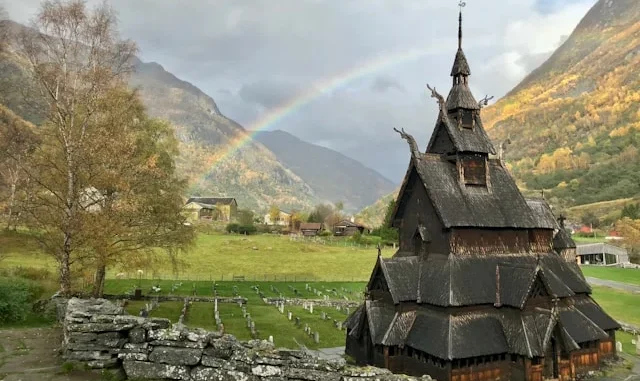
The Viking era, spanning from the late 8th to the mid-11th century, was a pivotal period in Scandinavian history, including Norway. The Vikings were known for their seafaring skills, exploration, and conquests. Today, Norway is home to many well-preserved Viking sites that offer a glimpse into this fascinating era.
The Viking Age: A Brief Overview
The Viking Age is traditionally said to have begun in 793 AD with the raid on the monastery at Lindisfarne, England, and ended with the Battle of Stamford Bridge in 1066 AD. During this time, the Vikings expanded their influence across Europe through trade, colonization, and conquest.

10 Historical Sites in Norway
- Lofotr Viking Museum, Lofoten
- Located on the island of Vestvågøy, this museum features a reconstructed Viking chieftain’s longhouse and offers a glimpse into Viking daily life.
- Borgund Stave Church, Lærdal
- Built around 1180 AD, this stave church is one of the best-preserved examples of its kind and provides insight into medieval Norwegian architecture.
- Avaldsnes Archaeological Site, Karmøy
- Known as Norway’s oldest royal seat, Avaldsnes features burial mounds, a church, and a museum highlighting the area’s Viking history.
- The Oseberg Ship, Oslo
- Discovered in a burial mound in 1904, the Oseberg Ship is one of the best-preserved Viking ships ever found and is on display at the Viking Ship Museum.
- The Heddal Stave Church, Notodden
- The largest stave church in Norway, dating back to the early 13th century, it is a masterpiece of medieval wooden architecture.
- The Viking Ship Museum, Oslo
- Home to three well-preserved Viking ships, including the Oseberg Ship, the museum provides insight into Viking maritime history.
- The Nidaros Cathedral, Trondheim
- Built over the burial site of St. Olav, Norway’s patron saint, the cathedral is a stunning example of Gothic architecture and a key pilgrimage site.
- The Borg Archaeological Site, Østfold
- Excavations at this site have revealed a large, well-preserved Viking chieftain’s hall, providing valuable insights into Viking society.
- The Urnes Stave Church, Luster
- A UNESCO World Heritage Site, the Urnes Stave Church is a superb example of traditional Scandinavian wooden architecture.
- The Gokstad Ship, Oslo
- Another well-preserved Viking ship, the Gokstad Ship was excavated in 1880 and is now housed at the Viking Ship Museum.
Conclusion
Norway’s Viking heritage is a fascinating chapter in the country’s history, and these 10 historical sites offer a glimpse into this legendary era. From well-preserved ships to ancient churches, each site tells a story of the Viking age and its impact on Norwegian culture.